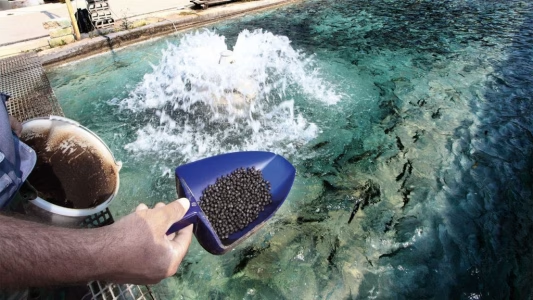Feed formulation used to be based on crude protein. It then started using digestible protein, exploring sources of raw materials on this basis.
Presenting Cargill’s approach during the recent IFFO’s InFocus Workshop on Precision Nutrition for Aquaculture, Christian De Santis of Cargill Aqua Nutrition explained that they have been using digestible protein and amino acids since the 2000s.
“Limitations with formulating using protein constraints include high unit cost in formulation, nutrient density (space-demanding, thus limiting performance potential), inefficient use of resources, consistency across different raw materials and their composition,” he said.
However, protein when we assess it based on nitrogen is a combination of nitrogen-carrying nutrients. Protein is traditionally measured as nitrogen, multiplied by a fixed factor (usually 6.25).
“We assume that protein contains 16% nitrogen by weight. However, this is generally not the case. We also assume that all nitrogen comes from protein. However, there is significant levels of non-protein-nitrogen. How do we deal with this complexity?” he asked.
Cargill’s Essential Nitrogen Concept, launched in 2021, relies on requirements of proteinogenic amino acids, not just essential amino acids, and splits nitrogen into two categories: essential nitrogen (that needed to drive a specific performance indicator) and non-essential nitrogen (supplied in excess as by-product of least cost formulation).
The concept applies the Ideal Protein Concept (IPC), which relies on the balance of all essential amino acids relative to lysine and the law of the minimum (if one of the essential nutrients is deficient, growth will be poor regardless of the amount of other nutrients). How does it work formulating based on the IPC?
“Increasing ideal protein boosts performance even without increasing digestible protein. Taking the concept further, amino acid profiles must be specifically developed. We should challenge what is essential and what is not essential. There might be specific requirements for amino acids in specific tissues, and we need to take this into account as an energy source,” Mr De Santis explained.
Going further, Cargill’s Effective Energy concept, launched in 2024 (patent pending), brings a new bioenergetic model which builds on and incorporates the essential nitrogen concept.
Revisiting the way feeds are formulated
From BioMar’s perspective, Kyla Zatti reiterated the need to constantly revisit the way feeds are formulated.
“As years pass, different constraints appear relating to ingredients. While reducing the forage fish dependency ratio, we increased our carbon footprint,” she said.
Biomar’s Blue Impact approach to formulating feeds relies on high quality raw materials, defined as follows: avoid competition with the human food supply, ensure cost competitiveness, rely on sufficient and consistent supply, present a rich bioavailable nutrient profile, comply with regulation and food safety, and present a low impact profile.
“You need that 10,000+ volume, especially for salmon feeds,” she said. “The future of aquafeed relies on global acceptance of our resource use.”
